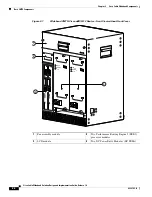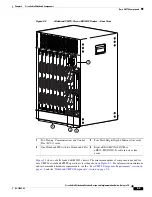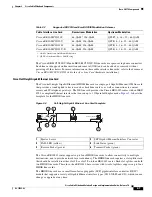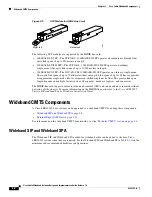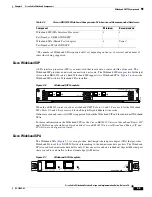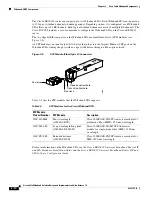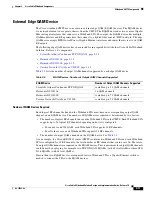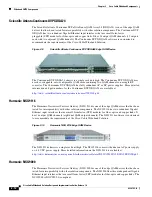
C H A P T E R
1-1
Cisco Cable Wideband Solution Design and Implementation Guide, Release 1.0
OL-10705-02
1
Solution Overview
This chapter provides an overview of the Cisco Cable Wideband Solution, Release 1.0, and contains the
following major topics:
•
Solution Description and Scope, page 1-1
•
Solution Key Features, page 1-3
•
Solution Components, page 1-3
In this document, the terms
wideband channel
,
bonded channel
, and
bonding group
have the same
meaning: a logical grouping of one or more physical radio frequency (RF) channels over which
MPEG-TS packets are carried.
Solution Description and Scope
Cisco IOS Release 12.3(21)BC and 12.3(21a)BC3 support the DOCSIS 3.0 Downstream Channel
Bonding feature, which is the key feature of the Cisco Cable Wideband Solution, Release 1.0.
In the Cisco Cable Wideband Solution, Release 1.0, the DOCSIS 3.0 Downstream Channel Bonding
feature supports downstream wideband channels consisting of multiple bonded RF channels. The
solution provides wideband data services over existing hybrid fiber coax (HFC) networks. With
wideband data services, multiple RF channels are aggregated into a single logical wideband
channel (bonding group) that delivers higher bandwidth to the wideband cable modem than was
previously possible with DOCSIS 2.0 technology. This aggregation of RF channels is referred to as
“channel bonding.”
The maximum bandwidth supported depends on the number of RF channels that can be aggregated into
a wideband channel. For example:
•
The Linksys WCM300-NA wideband cable modem supports downstream throughput of up to
approximately 292 Mbps (with a wideband channel consisting of eight RF channels at 6 MHz and
256 QAM).
•
The Scientific Atlanta DPC2505 wideband cable modem supports downstream throughput of up to
approximately 74 Mbps (with a wideband channel consisting two RF channels at 6 MHz and
256 QAM).
The Cisco Cable Wideband Solution, Release 1.0, can be deployed in parallel with DOCSIS 1.X/2.0
technology. The CMTS supports DOCSIS 1.X/ 2.0 modems on non-wideband ports while wideband
cable modems deliver higher-speed throughput on the wideband ports.


















